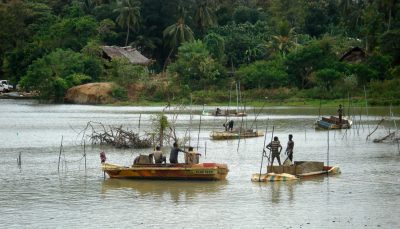Category:Cases - Archive, Legal

Case Number
SCFR 81/2004
SCFR 81/2004 is a case filed in relation to the mechanised sand mining in Maha Oya that seemed to have a devastating effect on not only the artisan sand miners but also on the environment surrounding the river. In February 2004 the Environmental Foundation Limited intervened in the above matter, amicus curiae, and has been an important contributor to the outcome of the case.
River sand is a vital element of the rapidly increasing demand for raw building material in the current trend of development in Sri Lanka. The demand for river sand reached its peak in early 2005, due to the need for reconstruction following the devastation caused by the 2004 tsunami disaster. Furthermore building contractors in Sri Lanka show a marked preference for using river sand for making concrete mixture for other civil structures, as offshore sea sand is not considered an alternative due to its high chloride content.
In Sri Lanka, laws and regulations on river sand mining are governed by the Mines and Minerals Act No. 33 of 1992 as amended in 2009. The Geological Survey and Mines Bureau (GSMB) and relevant Division Secretariats are authorized to issue permits or licenses to persons involved in mining activities. The issuing of the license would be influenced by the environmental sensitivity of the area and the quantity of sand available at the site.
Over a period of 10 years this case has resulted in a number of significant orders made, in relation to river sand mining in Maha Oya. One such outcome was that mechanised sand mining was prohibited under the National Environmental Act 47 1980 by Gazette notification No. 1454/4 – 17 July, 2006. This case also resulted in Jambugaswatte area in Katana being declared a no mining area. Areas such as 100m from the Jambugaswatte area and 2km of both sides of Kochchikade main bridge were declared environmentally sensitive areas of the river and were protected. Also extensive river bank rehabilitation was carried out by the GSMB and Provincial Environmental Authority.
The proceedings were terminated by the Supreme Court in 2014, with a 5 year Management Plan for the Maha Oya River being formulated with the input of all the stakeholders.





